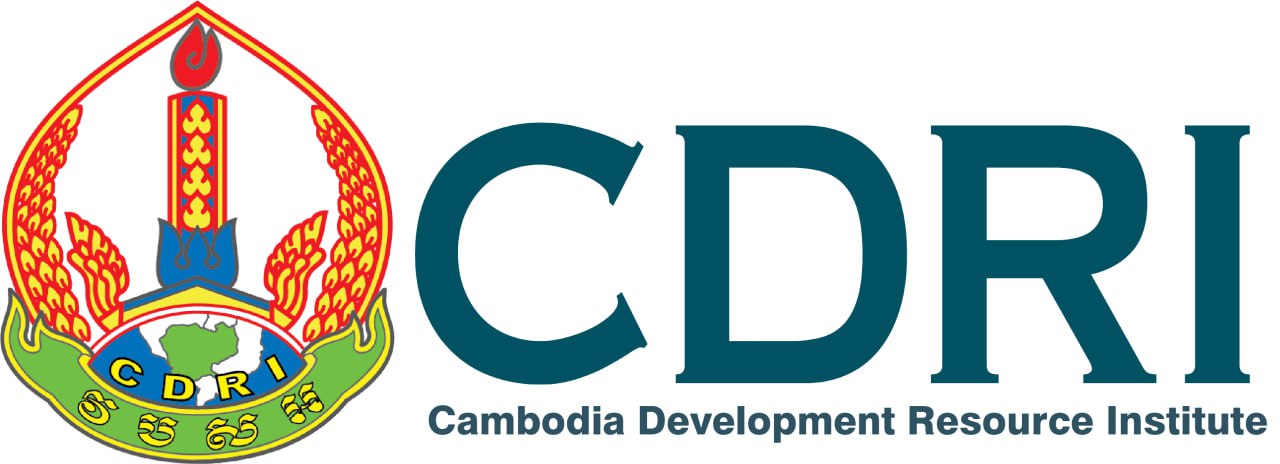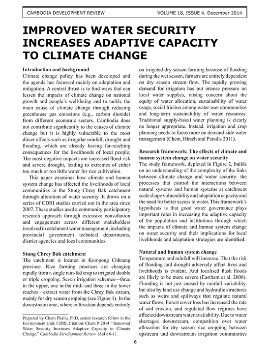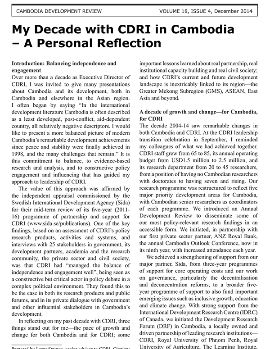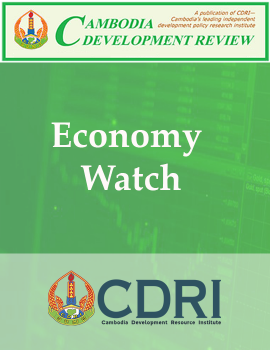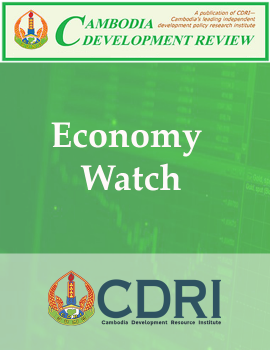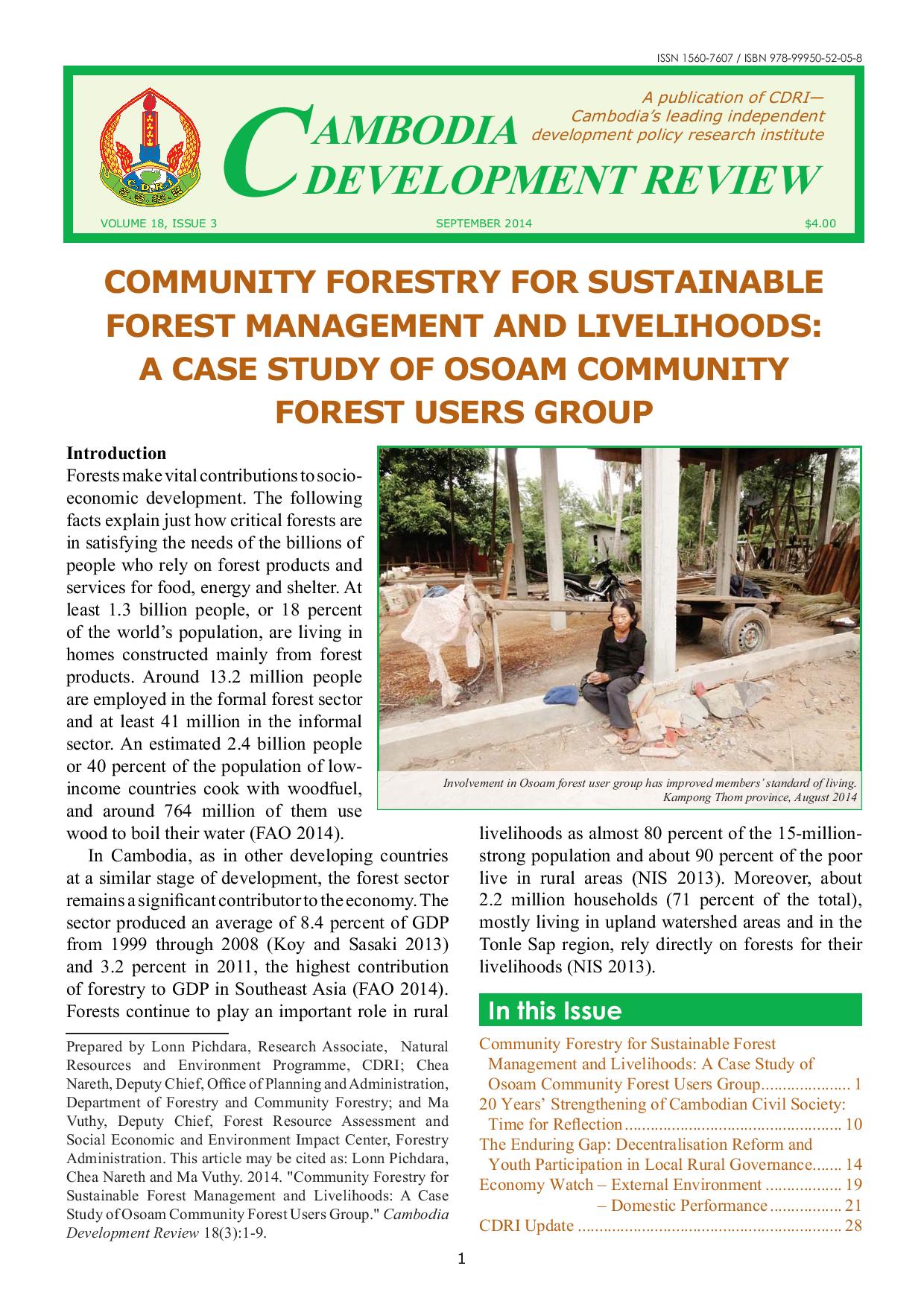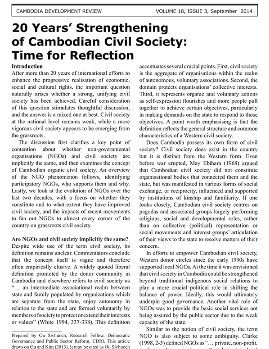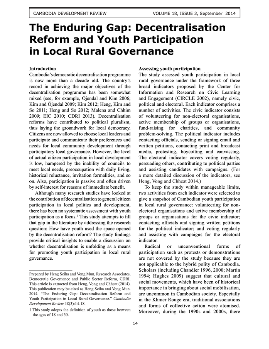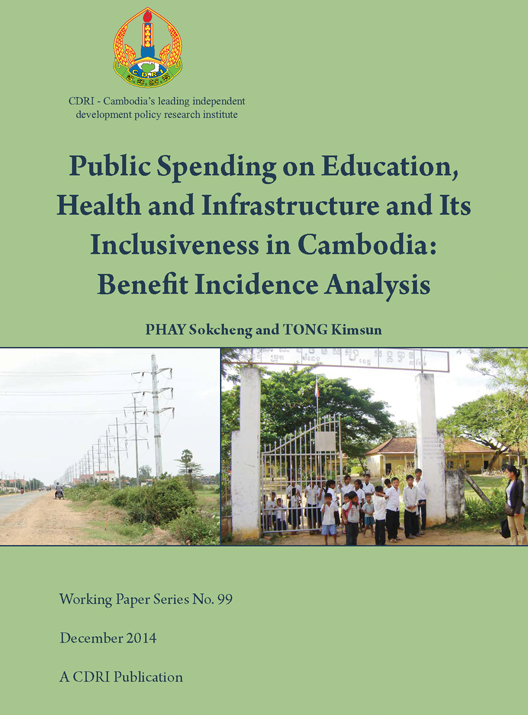
Public Spending on Education, Health and Infrastructure and Its Inclusiveness in Cambodia: Benefit Incidence Analysis
This paper examines public spending on education, health and infrastructure in Cambodia. Using benefit incidence analysis (BIA), marginal benefit incidence analysis (MBIA) and the nationally representative household survey data from the Cambodia Socio-Economic Survey (CSES) in 2004, 2009 and 2011, the paper examines whether governmen...
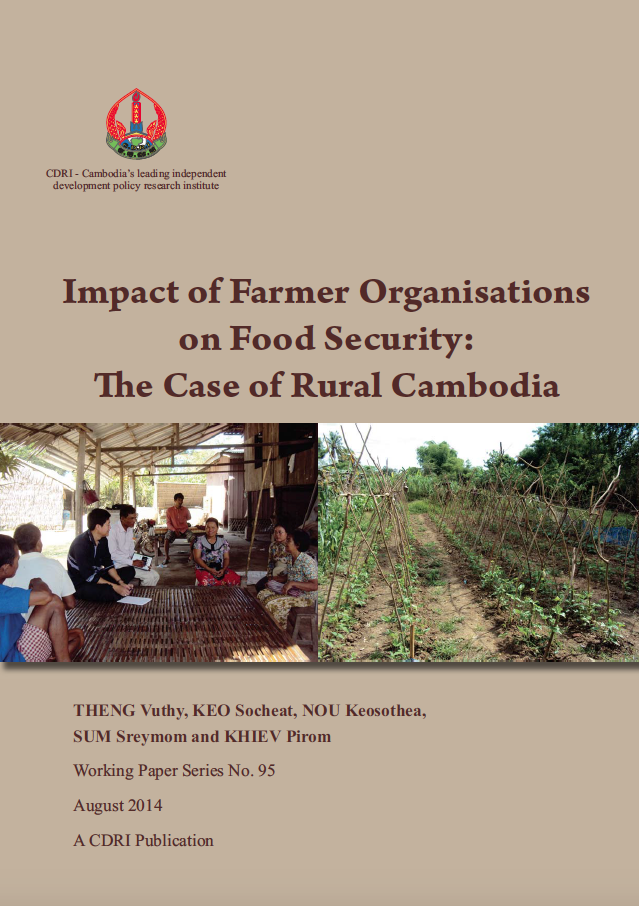
Impact of Farmer Organisations on Food Security: The Case of Rural Cambodia
This study assesses the impact of participation in farmer organisations (FOs) on the food security of rural households in Cambodia. The study was started in November 2010 and completed in June 2012. The study set out to: (1) examine the roles, operations and challenges of FOs in improving household food security; (2) analyse the household characte...
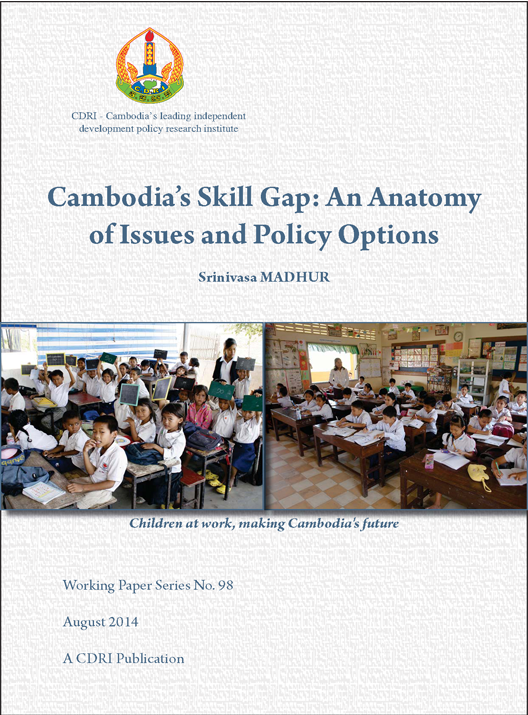
Cambodia’s Skill Gap: An Anatomy of Issues and Policy Options
There is growing consensus that an emerging skill gap could impose human costs and constraints on Cambodia’s economic growth and development. The country is facing a shortage of skilled human resources even for low-to-medium skill intensive industries. There is a widening gap between the skills that industries and businesses need and what the e...
